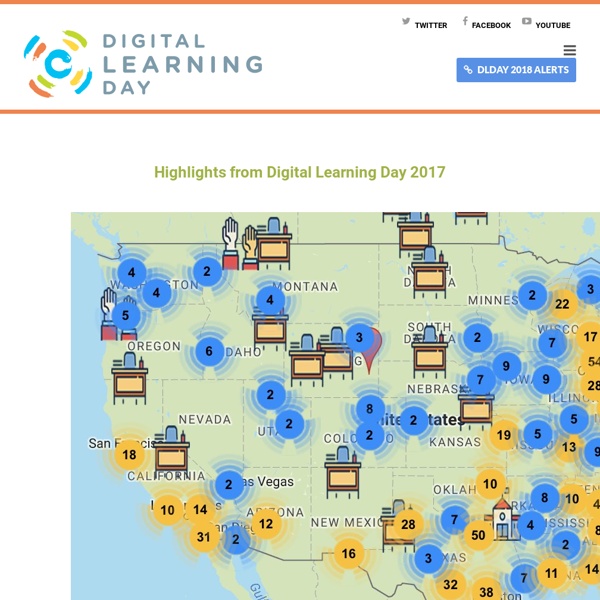



ClipGrab - Free YouTube Downloader & Converter iPad Textbooks: Reality Less Revolutionary Than Hardware | Wired Science Much as tablet computers went mainstream in the iPad’s wake, Apple’s latest educational project heralds an age of tablet-based schoolbooks. That, at least, is the hope and hype surrounding iBooks textbooks, launched Jan. 19 at a promotional gala held in the Guggenheim Museum and advertised in terms as glowing as an iPad’s screen. In coming years, schools worldwide will grapple with whether to adopt tablet-based materials, on the iPad or on other platforms. They’ll consider many factors — including cost, intellectual property issues and logistics — that may ultimately prove as important as the textbooks’ contents. But as learning is the ultimate purpose, the question remains: Will kids really learn more and better on tablets than existing media? That’s far from clear now, and the reality may prove less revolutionary than the hardware. “Is there any real learning advantage from electronic textbooks? 'Technology makes good schools better, but it doesn't make a bad school good.'
List of websites that can be useful for anyone Neil Hopkin's Blog In my previous post, I considered Benjamin Zander’s idea of being ‘fascinated’ by the hurdles that we encounter in striving to be an ‘A’ grade teacher / leader / learner. In this post, I extend the idea into my second principle for principals: living in to possibilities. Professor Dylan Wiliam makes the simple point that the graphs of school improvement are, in large part, quite flat. The distance between the vast majority of schools is statistically quite slight. However, in order to track our progress along this somewhat flat gradient, we have resorted to creating additional ways to level our students and pupils to enable us to chart progress. In the UK, we are just about to embark upon another journey with regard to our understanding of levels, in so far as our secretary of state has announced the demise of levels. The problem is, with our jobs, that we are caught in the moment. There is something captivating about watching the sunset on the horizon.
Four Video Apps To Help Parent/Teacher Communication Teaching is not an easy job. We all know this to be true. I have a sure fire way to make your job easier. Take out your smart phone and take video of the interesting things you do in class. It doesn't even have to be interesting, just take some videos of students doing their regular daily work. You think that's boring? VIne- Vine has a bad reputation, but in the hands of a responsible person it is an easy app to use.
iPads in Education FLAC to Apple Lossless Converter - Convert FLAC to Apple Lossless ALAC Detailed Guide on How to Convert FLAC Files to Apple Lossless ALAC on Mac or Windows August 25th by Bigasoft Support Tags: flac to apple lossless, convert flac to apple lossless, flac to apple lossless conversion, flac to apple lossless mac, convert flac apple lossless, flac to alac, flac to apple lossless lion, apple lossless os x, apple lossless mac os x lion, apple lossless lion 10.7, flac to apple lossless converter mountain lion Overview FLAC stands for Free Lossless Audio Codec, which means audio is compressed in FLAC without any loss in quality. Apple Lossless, also known as ALAC (Apple Lossless Audio Codec), or ALE (Apple Lossless Encoder) is an audio codec developed by Apple Inc. for lossless data compression of digital music. This article introduces a powerful FLAC to Apple Lossless Converter, Bigasoft FLAC Converter, and with a detailed step-by-step guide on how to directly convert FLAC to Apple lossless ALAC. Introduction of Bigasoft FLAC Converter Step 2 Set output profile
Digital Is 50 Kick-Ass Websites You Need to Know About It's time to update the entries in your browser's links toolbar. But with recent estimates putting the size of the internet at well more than 100 million distinct websites, it's getting harder and harder to get a handle on all the great stuff that's out there. That's why we've compiled this list. And unlike some lists you may have seen, which try to name the very "best" websites, but end up just telling you a lot of stuff you already know, we've chosen instead to highlight 50 of our favorite sites that fly under most people's radar. You might have heard of some of these sites, but we'll bet you haven't heard of all them. Demoscene.tv See What Can Be Done with 4 Kilobytes If you’re any kind of nerd at all, you probably know about the demoscene, where talented programmers create complex videos rendered in real-time, stored in incredibly small files. But what if you just want to see what all the fuss is about without actually downloading and running an executable? lite.Facebook.com Prezi.com
Download Video in Different Formats Sharing, linking, embedding, presenting video to our students is a good way to enhance learning. Students are more motivated and gain interest on lessons when they watch video. However, watching streaming video from Youtube, Vimeo or other video sites is somewhat disappointing when the internet speed is so slow and the video stops and shows buffering. The best solution is to download the video first and insert it in your presentation (make sure you are to download only creative commons). Looking for the right format of a video you need to download is a challenge. Just paste the link of the video then click download. When you want to directly download a video while you are watching you can use Keepvid's bookmarklet.Keepvid offers you to download its program, too, but you need to purchase it via paypal. With the use of this tool, surely you will/can download video that is compatible to what you use and need. For more information visit: Find time to explore these screencasting tools.
WebQuest Maker Home